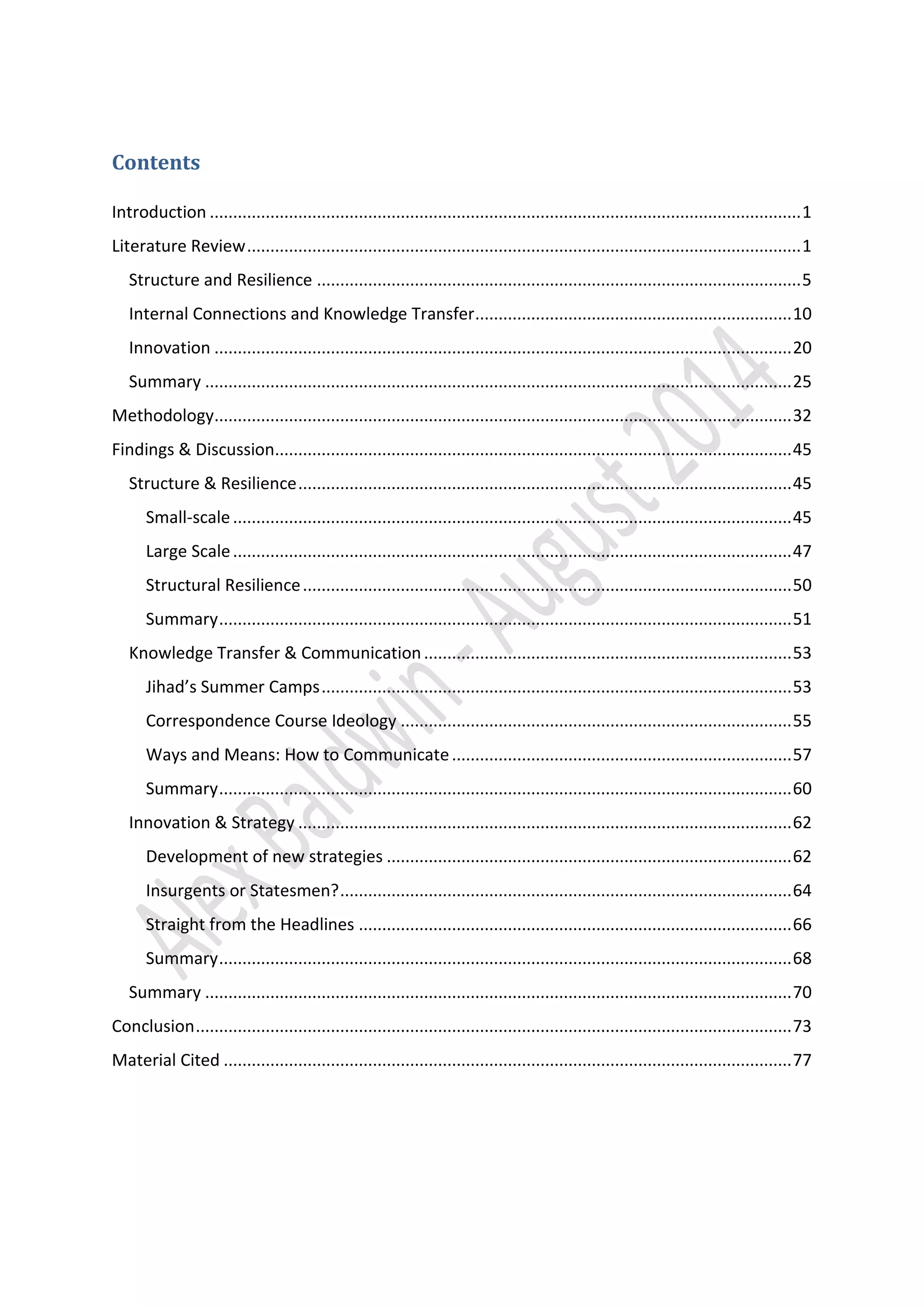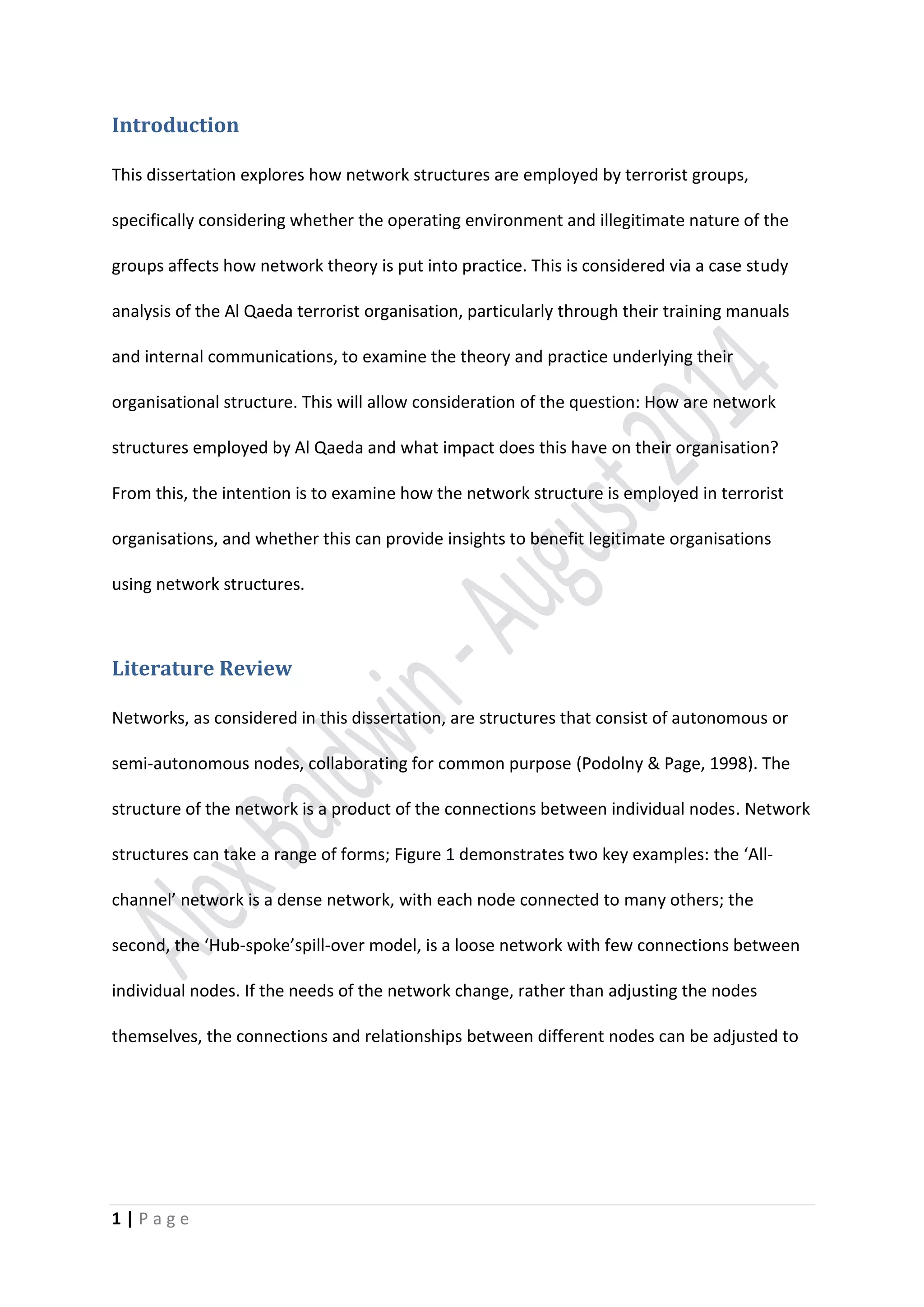This document provides a literature review on network structures and their application in terrorist organizations. It discusses three key areas: 1) How network structures improve organizational resilience by allowing flexibility and decentralization; 2) How knowledge is transferred through networks via communication channels; 3) How networks foster innovation by enabling generation of new strategies. The document reviews theories on how networks differ from hierarchies and analyzes attributes like resilience, knowledge transfer, and innovation in both legitimate and illegitimate network organizations. It aims to understand how Al Qaeda employs network structures and what impact this has on the terrorist group.



